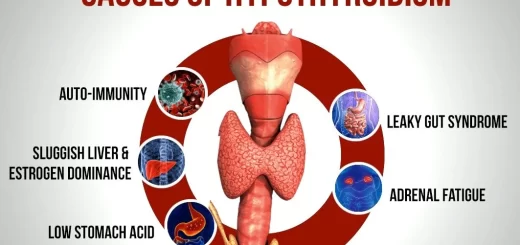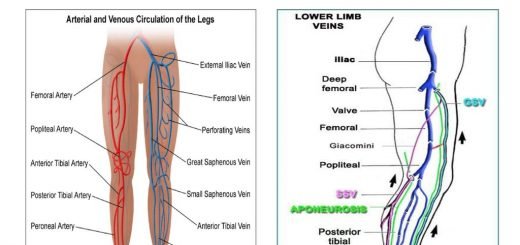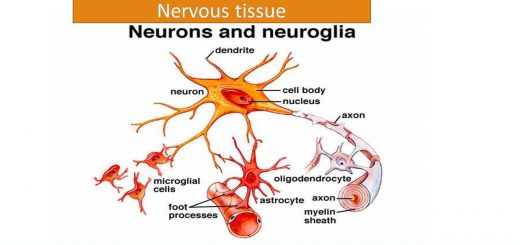Forearm bones, anatomy, function and Skeleton of the hand
The forearm lies between the knee and the ankle joints, the crus. It consists of many muscles, including the flexors and extensors of the digits, a flexor of the elbow (brachioradialis), and pronators and supinators that turn the hand to face down or upwards, It contains the radius, and the ulna, forming the radioulnar joint.
Forearm bones
The forearm bone is the region of the upper limb between the elbow & the wrist, the forearm is covered by the skin, the anterior surface is less hairy than the posterior surface. The forearm describes the entire appendage of the upper limb.
The ulna
The ulna is a long bong, placed at the medial side of the forearm, parallel with the radius. It is divided into a shaft and ends.
The Upper End: The upper extremity presents two curved processes, the olecranon & the coronoid processes; and two concave articular cavities, the trochlear & radial notches.
The Olecranon (olecranon process): Its superior surface is of quadrilateral form, marked behind by a rough impression for the insertion of the Triceps brachii. Its anterior surface is smooth, concave, and forms the upper part of the trochlear notch.
The coronoid process is a triangular eminence projecting forward from the upper & anterior part of the ulna. Its anterior surface is marked by a rough impression (the tuberosity of the ulna). which gives insertion to the Brachialis muscle, and the lateral surface presents a narrow, oblong, articular depression, the radial notch.
Trochlear notch is a large depression, It is formed by the olecranon and the coronoid process and serving for the articulation with the trochlea of the humerus. The radial notch receives the circumferential articular surface of the head of the radius, it is a narrow, oblong, articular depression on the lateral side of the coronoid process.
The supinator fossa is a triangular fossa below the radial notch. Its posterior border is called the supinator crest. The shaft has three borders and three surfaces.
Borders
- Anterior border starts above at the prominent medial angle of the coronoid process and ends below in front of the styloid process.
- Posterior border starts above at the apex of the triangular subcutaneous surface at the back part of the olecranon and ends below at the back of the styloid process. It gives attachment to extensor carpi ulnaris, flexor carpi ulnaris, and flexor digitorum profundus.
- Interosseous border: Converge from the extremities of the radial notch and ends below at the head of the ulna. This border gives attachment to the interosseous membrane.
Surfaces
- Anterior surface: the supper ¾ gives an origin for the flexor digitorum profundus. The lower fourth gives an origin for the pronator quadratus.
- The posterior surface is subdivided by a longitudinal ridge, sometimes called the perpendicular line (vertical ridge), into two parts: the medial part is smooth, and the lateral portion, wider and rougher. This lateral part gives an origin for abductor pollicis longus, extensor pollicis longus and extensor indicis (from above downwards).
- Medial surface: the upper three-fourths of it give origin to the flexor digitorum profundus, and its lower fourth is subcutaneous.
The lower end contains the head & styloid process. The head articulates with an ulnar notch of the radius in the inferior radioulnar joint. The head is separated from the wrist joint by the articular disc. There is a groove between the head and styloid process posteriorly for the tendon of extensor carpi ulnaris.
The radius
It is situated on the lateral side of the ulna. Its upper end is small. disc-like and it forms only a small part of the elbow-joint, but its lower end is large and it forms the chief part of the wrist-joint. It has a shaft and two ends.
The upper end:
- The upper end presents a head, neck, and tuberosity. The head is disc-shaped, and on its upper surface is a shallow cup or fovea for articulation with the capitulum of the humerus. The circumference of the head is smooth; where it articulates with the radial notch of the ulna and the annular ligament.
- The head is supported on around, smooth and constricted portion called the neck. Beneath the neck, on the medial side, is an eminence, the radial tuberosity, which gives insertion in, its posterior part, to the biceps brachii muscle.
The shaft
It presents three borders and three surfaces.
Borders
- Anterior border: Its upper third is prominent, and from its oblique direction has received the name of the oblique line of the radius.
- The posterior border starts above at the back of the neck and it ends below at the posterior part of the base of the styloid process.
- Interosseous border (medial border): to which the interosseous membrane is attached.
Surfaces
- The anterior surfaces: Its upper three-fourths gives an origin for flexor pollicis longus, In its lower fourth, its affords insertion to the pronator quadratus muscle.
- The posterior surfaces: gives an origin for abductor pollicis and extensor pollicis brevis.
- The lateral surface: about its center is a rough ridge, for the insertion of the pronator teres muscle.
The Lower End:
The lower end is large, of quadrilateral form, and provided with two articular surfaces: one below, for the carpus, and another at the medial side, for the ulna.
- The inferior surface is triangular, concave, smooth, and divided by a slight anterior-posterior ridge into two parts. The lateral, triangular, articulates with the scaphoid: the medial, quadrilateral. with the lunate bone.
- The medial surface is called the ulnar notch of the radius; it is narrow concave. smooth, and articulates with the head of the ulna. These two articular surfaces are separated by the prominent ridge, to which the base of the triangular articular disc is attached; this disc separates the wrist-joint from the distal radioulnar articulation.
- The lateral surface is prolonged obliquely downward into a strong, conical projection, the styloid process.
- The anterior surface affords insertion to the pronator quadratus.
- The posterior surface is rough by the presence of the dorsal tubercle.
The skeleton of the hand
The skeleton of the hand is subdivided into three segments: the carpus, the metacarpus, and the phalanges.
The carpus: Eight carpal bones made up of two rows. Each raw is formed of four bones.
- Proximal row: Scaphoid, Lunate, Triquetrum and pisiform.
- Distal row: Trapezium, Trapezoid, Capitate and Hamate.
The pisiform is regarded as a sesamoid bone embedded in the tendon of the flexor carpi ulnaris. The scaphoid bone is the largest bone of the proximal row. It is the most commonly fractured bone in the carpus.
Flexors of forearm, Forearm muscles, structure, function & anatomy
Blood vessels of forearm & hand, Veins and Lymphatics of the upper limb
Arm structure, compartments, muscles, anatomy & Cubital Fossa contents
Bones of upper limb structure, function, types & anatomy
Bone (Osseous Tissue) types, structure, function and importance
Types of bones, Histological features of compact bone & cancellous bone



